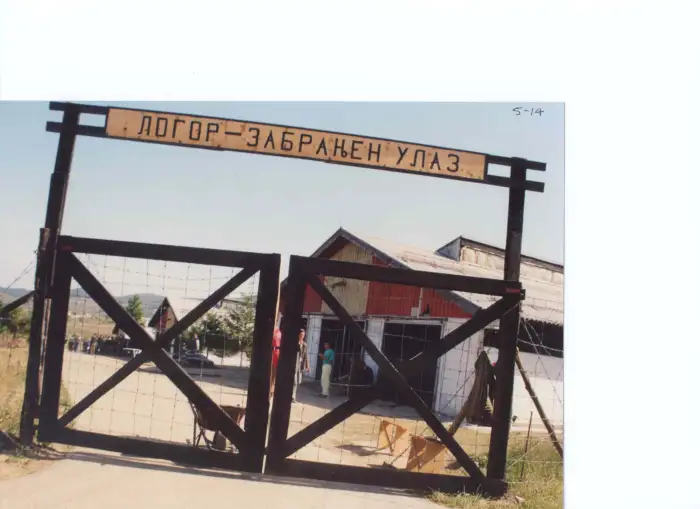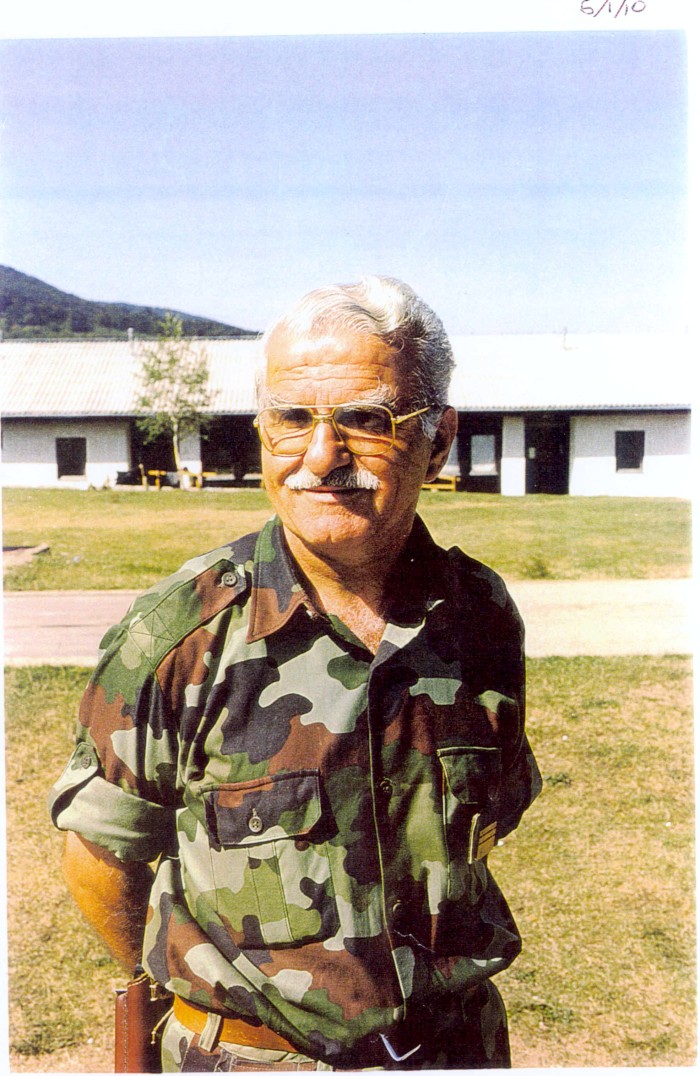The Bosnian Genocide was committed by the Bosnian Serb Forces during 1995 in the midst of war. In 1979 Muslims represented the largest single population group.

The biggest execution happened in the town of Srebrenica, a small town in the East of Bosnia. The massacre killed more than 8,000 Bosnian Muslims, as well as the mass murder of an additional 27,000+ civilians, in and around the town of Srebrenica in Bosnia and Herzegovina, committed by units of the Army of the Republika Srpska under the command of General Ratko Mladić.

Former Bosnian Serb army commander Ratko Mladic. May 26th, 2011
The ethnic cleansing campaign targeted Bosnian Muslims and Bosnian Croats. This campaign included confinement, murder, rape, sexual assault, torture, beating, robbery and inhumane treatment of civilians. Along with this; the targeting of political leaders,deportation of the citizens and the destruction of homes, business and places of worship. During World War II, Nazi Germany invaded Yugoslavia and corrupted the government, murdered over 80 percent of the Jewish population, along with thousands of Serbs and gypsies. A communist resistance army, led by Marshal Tito, drove the Nazis back in 1945 and declared Yugoslavia to be a new independent communist state. Afterwards, Tito ruled Yugoslavia as a benevolent dictator. Yugoslavia was one of the most open communist nations for its time and successfully implemented peaceful coexistence between cultures, but Tito marginalized any political activists who disagreed with his pan-Yugoslav ideals.
In 1989 Slobodan Milosevic of Serbia became President of Yugoslavia. Milosevic began promoting violent uprisings of Serb political parties in Croatia. Milosevic wanted a Serb-dominated state and saw fit an ethnic cleansing. In 1992 Croatia declared independence from Slovania and almost immediately, Croatia was flooded with violence, no nationality was spared during the fighting. In the first seven months of the war, 10,000 people died and another 700,000 were deported.

Penny Marshallshakes hand with Bosnian Muslim prisoner; Fikret Alic, at concentration camp. (1992)
The Serbs had five various methods of execution:
1. Concentration - The Serbs would urge residents of the chosen city to leave, while the army surrounded the city and opened fire resulting in mass murder. The camps were surrounded by land-mines to prevent escape of prisoners.
2. Decapitation - This mainly happened to professionals and political leaders and anyone with substantial education
3. Separation - This segregated the women, children, and elderly men from the men of “fighting age.”
4. Evacuation - move women, children, and edlerly men to concentration camps or national borders.
5. Liquidation - execute the men of “fighting age.”


The entrance to the Manjaca concentration camp reads in cyrillic letters "CONCENTRATION CAMP - PROHIBITED ENTRY". The Manjaca concentration camp was controlled by Serb Lieutenant Colonel Bozidar Popovic.
The single largest massacre in Europe since World War II occurred on July 11th, 1995. General Ratko Mladic marched his army into Srebrenica, and murdered approximately 7,000 Bosnian males. Up to 7,500 men, and boys over 13 years old, were killed. They were marched to fields which later became mass graves. Anyone caught trying to escape, were shot or decapitated on the spot.
Those who were not killed in massacres, were sent to one of 381 concentration or detention camps in Bosnia. These camps contained inhumane living conditions, and beatings, torture, and mass executions were daily occurrences. Approximately 10,000 people died over the course of the war. Women of reproductive age were taken to rape camps, where they were raped and tortured until they became pregnant. It is estimated that 20,000 women were raped during this time.

Bosnian genocide mass grave at Pilica farm, twenty feet deep and a hundred feet long, was excavated by forensic pathologists in 1996.
In July of 1992, the first international press reports, photos, and videos of the conflict in Bosnia were revealed, which brought back images of the horror from the Holocaust fifty years earlier, however the international community and powerful countries did not send relief or aid. In Bosnia's, a radio message from an amateur operator in Srebrenica was recieved: 'Please do something. Whatever you can. In the name of God, do something.'
Former Bosnian Serb leaders Radovan Karadžić and Ratko Mladić went on trial on two counts of genocide and other war crimes committed in Bosnia. Karadžić and Mladić were charged(separately) with: the following and both been declared war criminals. In 2001, Radislav Krstic was sentenced 46 years in prison.
Count 1: Genocide against multiple communities
Count 2: Genocide
Count 3: Persecutions on Political, Racial and Religious Grounds, a Crime Against Humanity.
Count 4: Extermination, a Crime Against Humanity.
Count 5: Murder, a Crime Against Humanity.
Count 6: Murder, a Violation of the Laws or Customs of War.
Count 7: Deportation, a Crime Against Humanity.
Count 8: Inhumane Acts (forcible transfer), a Crime Against Humanity.
Count 9: Acts of Violence the Primary Purpose of which is to Spread Terror among the Civilian Population, a Violation of the Laws or Customs of War.
Count 10: Unlawful Attacks on Civilians, a Violation of the Laws or Customs of War.
Count 11: Taking of Hostages, a Violation of the Laws or Customs of War.
Today, mass graves have been uncovered but identification of the corpses has proved near impossible. Only a few hundred have been given names. There are still 20,000 people listed as missing in Bosnia.

No comments:
Post a Comment